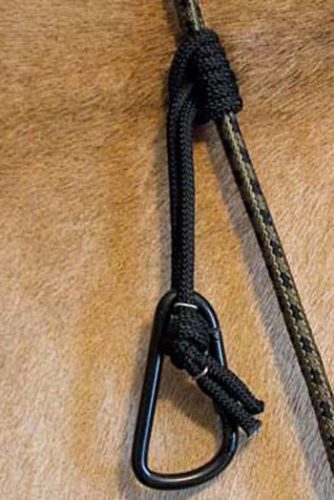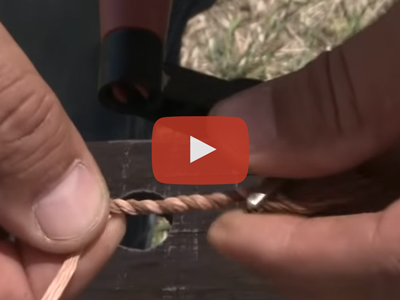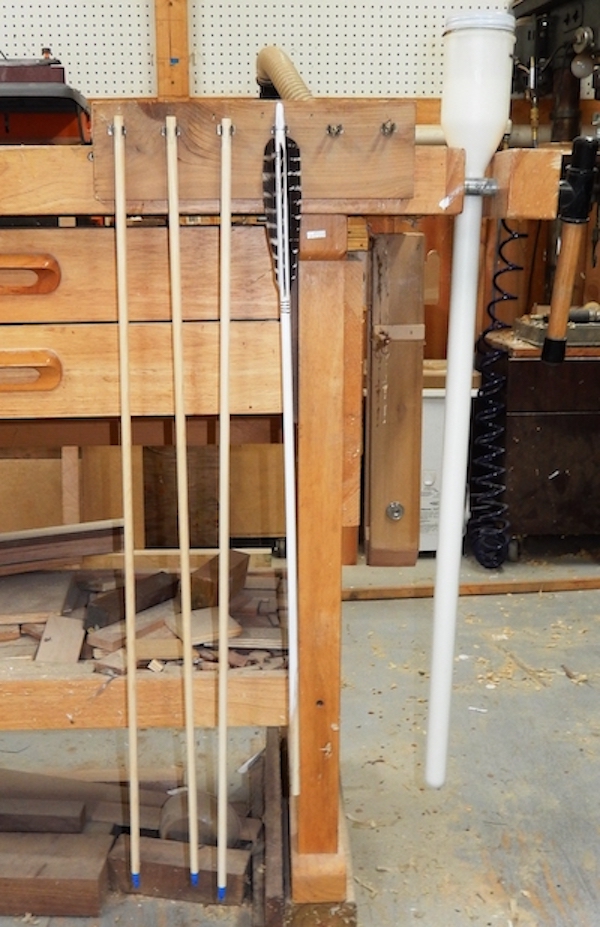With my 14 year-old daughter now beginning her journey as a bowhunter, I often find myself contemplating how things have changed since I was her age. Back then tree stand safety simply meant you didn’t sit on dead limbs—no safety harnesses, manufactured portable tree stands, climbing sticks, et cetera. One of my favorite locations to hunt at the time was appropriately dubbed “The 2×4 Tree” because the entire stand consisted of a pair of 2x4s nailed across some white pine branches, reached by climbing a series of landscaping spikes driven into the tree’s trunk.
Looking back, it’s amazing none of us suffered serious injury. Nearly 30 years later, tree stand hunters take safety a little more seriously. We now have plenty of accessories designed to make our time above the forest floor safe, comfortable, and enjoyable, provided we follow the manufacturer’s instructions and employ a modicum of common sense. Beyond that, there are certain measures we can take to assure our safety further when we take to the trees during our hunting adventures.
Tree stands have evolved substantially since I last climbed The 2×4 Tree. Modern portable stands, generally made of steel or aluminum, come in a variety of sizes and styles to accommodate nearly any hunting location. Hang-on stands, perhaps the most popular style in use, are attached to a tree by means of a strap, rope, or chain. Even though your particular stand’s attachment system likely meets industry safety standards, the use of an additional heavy duty ratchet strap to secure the stand to the tree can provide a supplemental measure of safety.
Never leave your stands out year round. Tree trunks increase in diameter as they grow, which can stress and damage your attachment system. In addition, steel stands will rust as the years go by, further weakening them and creating a potential hazard. If you use a climbing stand, connecting the top and bottom sections with a three-foot section of cord will prevent the platform from falling down the tree trunk should your feet slip while climbing.
There are many commercially made products to help you safely climb a tree. Climbing sticks and ladders are excellent choices, and adding strips of grip tape to their pegs or rungs will help prevent your boots and hands from slipping off during use. Screw-in steps are also a popular choice, but in addition to damaging trees, they basically turn into steel spikes should you lose your footing. I’ve heard of more than one person impaling himself on a screw-in step during a climbing mishap. If you do use screw-in steps never leave them in the tree year round, and make sure you only screw them into fresh, healthy wood. Whatever device you use to climb a tree, always maintain three points of contact during your climb and descent—two hands and one foot, or two feet and one hand. Also, set up your climbing apparatus so that you climb above your stand and step down onto the platform.
This should really go without saying, but never use tree branches as foot- or handholds. Branches that look healthy can suddenly let go under your weight without warning. Also, make sure the tree you are climbing is healthy and sturdy enough to handle your weight. You should avoid small trees, ones with animal dens in their trunks, or excessive dead branches, especially if any of them are above your stand.
Probably the most important safety measure to employ is making sure you wear an appropriate full body harness and remain attached to the tree whenever you leave the ground. Several manufacturers make harnesses that range from a series of straps for your legs, waist, and shoulders, to vest systems with leg straps attached. These harnesses attach you to your tree by means of a strap and Prusik knot. Most harnesses have a pair of steel loops at hip-level to allow your attachment strap to double as a climbing belt during tree stand installation.
Unfortunately, many tree stand accidents happen every year as hunters climb up or down or transition from their climbing apparatus—stick, steps, and such—into or out of their stands. This is a shortcoming of fall restraint harnesses; by themselves, they do not keep you attached to the tree from the time you leave the ground. A few companies have filled this void by means of a static line that attaches above your tree stand and reaches to the ground. By connecting your climbing harness to a carabineer and a Prusik knot on the static line, you can climb and descend in relative safety. Should you decide to make your own static line and Prusik knot, a word of caution: use only high quality rope and carabineers rated for climbing. The rope and carabineers from your local hardware store are not reliable enough to assure your safety in the event of a fall.
Mobile phones are quite popular these days. If your hunting area has service, always remember to take your phone with you, and have your emergency contact numbers preprogrammed for speed dial. If you find yourself in a situation you can’t get out of on your own or suffer an injury during a fall, help may only be a phone call away. Also make sure your phone is stored where you can easily reach it at all times. Having your phone in a fanny pack hanging in your tree isn’t going to do you any good should you fall and not be able to right yourself. Having a sharp knife within reach isn’t a bad idea either. Furthermore, always make sure someone knows where you’ll be hunting and when you intend to return.
Of course, this article is not intended to provide the final word in tree stand safety. The suggestions provided are generic, and your individual situation may require certain measures not covered here. So the next time you seek your hunting adventures above the forest floor, make safety your top priority. Your friends and family will thank you.
 Tying a Prusik Knot
Tying a Prusik Knot
At its core, a Prusik knot is simply a loop wrapped around itself. To tie this knot, start with a piece of climbing rope approximately two feet long. Fold it in half and tie the cut ends together by means of a square knot. Lay your static line across the loop and wrap the loop end over the knot and around the static line three times with each successive wrap further apart than the last. Pull the knot end of your loop tight. Done properly, the Prusik knot will easily slide up and down your static line, but cinch tight under tension.
Editor’s Note: This article is reprinted from the Dec/Jan 2012 issue of Traditional Bowhunter® Magazine. Since then, this young lady has grown into a great archer and hunter.
Also see the article Saved By A Prusik Knot by Rob Bingel and It’s Not A Knot by Curt Brisky. And Curt is right, it is a hitch, not a knot.







Leave A Comment